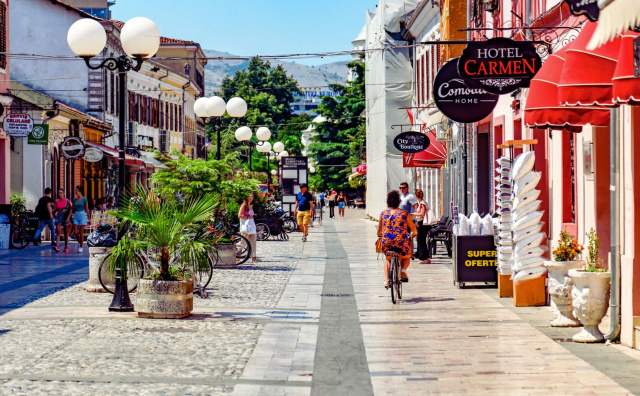Copyright novinite

Shkodër, also known as Scodra, stands as one of Albania’s most significant cultural and economic centers, representing the country’s strong European identity and long-standing historical ties with Bulgaria. Situated in northern Albania, the city has for centuries been known for its large Catholic community, which has produced a number of bishops who later served in the Sofia-Plovdiv Diocese. This shared religious connection is only one of the many links between the two nations. During the Ottoman era, groups of Christians from Shkodër were resettled across Bulgarian lands. Their descendants still carry the surname Shkodrevi, a lasting reminder of their roots in this Albanian city. Historical bonds also appear in military history: during the Balkan Wars, one of Shkodër’s own, Atanas Dimitrov, fought in the Macedonian-Adrianople volunteer corps, serving in the 3rd company of the 10th Prilep Regiment. In the same conflict, Shkodër became one of the key Ottoman strongholds, alongside Ioannina and Edirne. While the Bulgarian army achieved great success in Edirne, Shkodër’s fortress resisted a prolonged siege by Serbian and Montenegrin forces. Its military importance and strategic location have always made it a vital part of the Western Balkans. For centuries, Shkodër was under the influence of the Republic of Venice, unlike most of Albania, which remained deeply tied to Ottoman rule. This long Venetian period left a clear mark on the city’s architecture, urban layout, and mentality, helping it develop a distinctly European character that endures to this day. Walking through the streets of modern Shkodër, visitors notice a vibrant, open atmosphere with no visible trace of Enver Hoxha’s isolationist regime. Once part of one of the most closed-off societies in Europe, the city now embodies Albania’s rapid transformation and openness to the world. Its young population blends seamlessly with international visitors, reflecting a country eager to take its place as a modern European destination. Religiously, Shkodër remains one of Albania’s most diverse cities. The majority of its residents are Catholic, but the city is also home to a considerable Muslim community and around 4,000 Orthodox Christians. The Orthodox population has built a striking Nativity Church, which stands as a symbol of faith and coexistence. Visitors from Bulgaria are received there with warmth and hospitality, highlighting the friendly ties between the two peoples. Today, Shkodër and Albania as a whole challenge long-held stereotypes about the so-called “land of eagles.” For decades, outside influences promoted distorted images meant to create division and misunderstanding between neighboring nations. Yet, modern Albania, and especially cities like Shkodër, demonstrate the opposite: openness, respect, and a sense of shared Balkan identity. Albania’s recognition of its Bulgarian minority and its respect for their rights further underline the mutual goodwill between the two nations - something that cannot always be said about some of Bulgaria’s other neighbors, even within the European Union. Through its history, culture, and modern outlook, Shkodër stands as a bridge between Albania, Bulgaria, and the broader European family. Source: Georgi Pashkulev, BGNES



